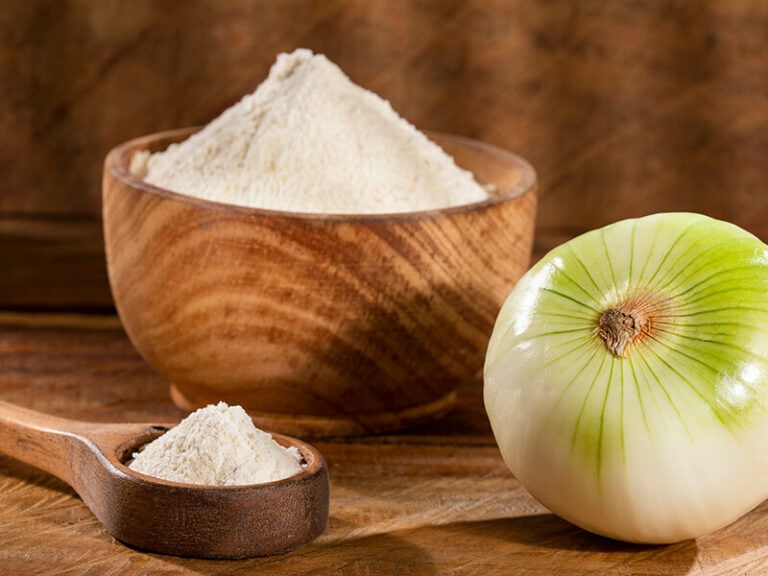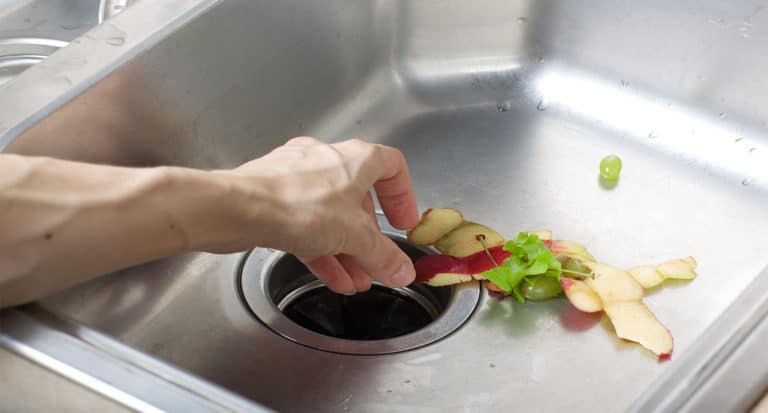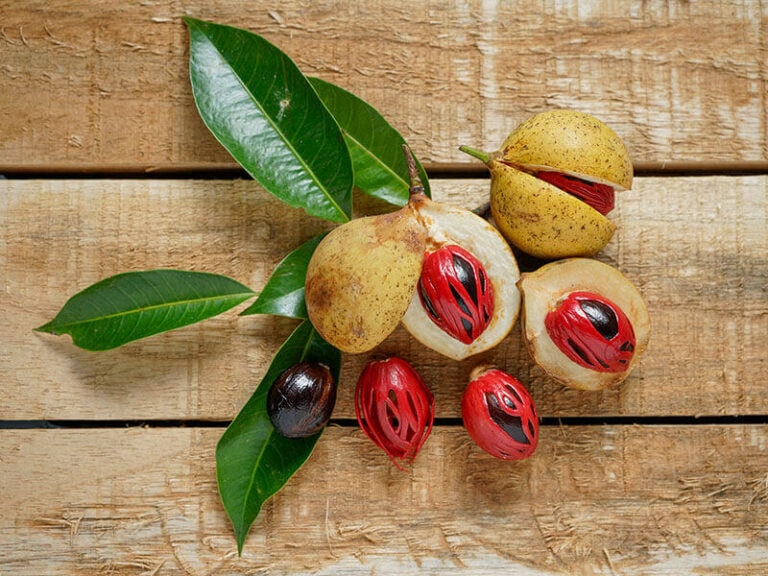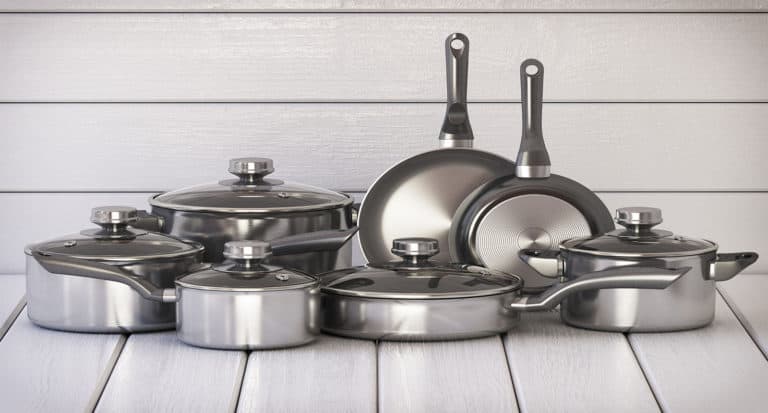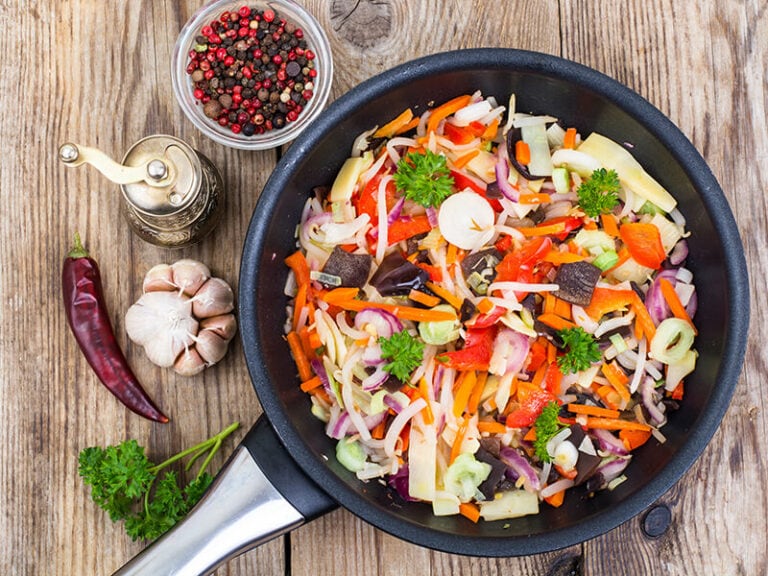Potato starch vs. cornstarch – Which one do you like better? If you have this question in mind, you should read on to find the answer.
Both of them are extensively used in the kitchen of both professional and amateur cooks because they’re highly versatile and can be a part of various foods.
You might want to contemplate their differences before going to the supermarket and stand hours before the packages of potato starch and cornstarch to see what you should bring home.
This article is a good chance for you to do so.
Wait no more! Let’s dig deep into this exciting topic and find your own answer.
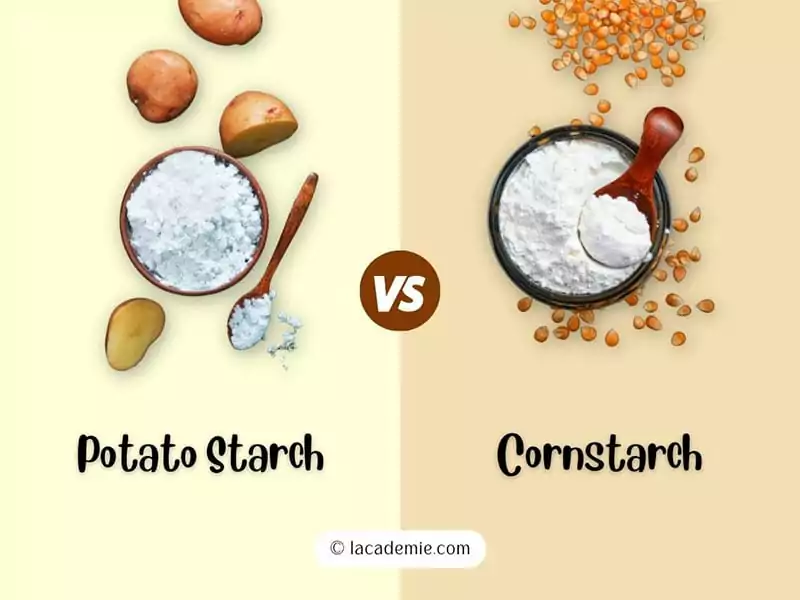
Comparison Table Of Potato Starch And Cornstarch
Here’s a shortcut for people who are too lazy to read a lot, which is presented in a quick table so that you can easily access the information you need about potato starch and cornstarch.
What Are The Similarities and Differences Between Cornstarch And Potato Starch?
Let’s gather all the information you can have about potato starch and cornstarch so that you can easily figure out their similarities and differences.
The Origins, Appearance, Storage, And Shelf-life of Potato Starch And Cornstarch
You might be familiar with these starches in cooking, but do you know anything about their origins? The next section will reveal more information about them you might find interesting.
Potato Starch
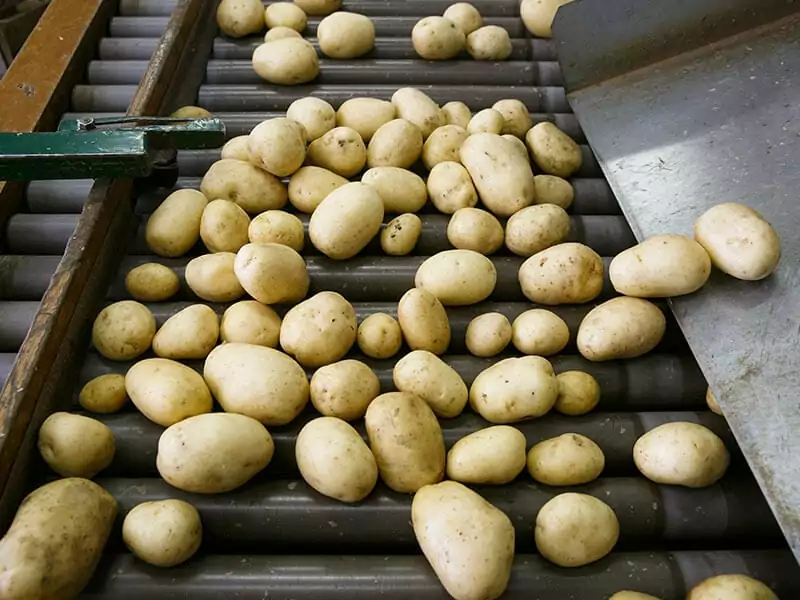
Potato starch is made by crushing potatoes, removing all fiber and skin before dewatering, washing out, and drying to create a pure white, flour-like powder.(1) Its production is almost like the process to make potato flour, and only differs in a few steps, resulting in different products.
Like most other starches, it doesn’t have a taste or smell, so that it can easily be incorporated into various recipes.
This pantry-friendly ingredient is often used to thicken sauces and increase the crispiness of frying dishes and baked goods. When being thickened with liquid, it leaves the sauce much clearer than wheat flour and cornstarch and also pourable.
It originates in South America but was first commonly used in European countries; now, it’s popular across the world.
If stored properly in an airtight container at a cool, dry place, potato starch can have an indefinite shelf-life.
Cornstarch
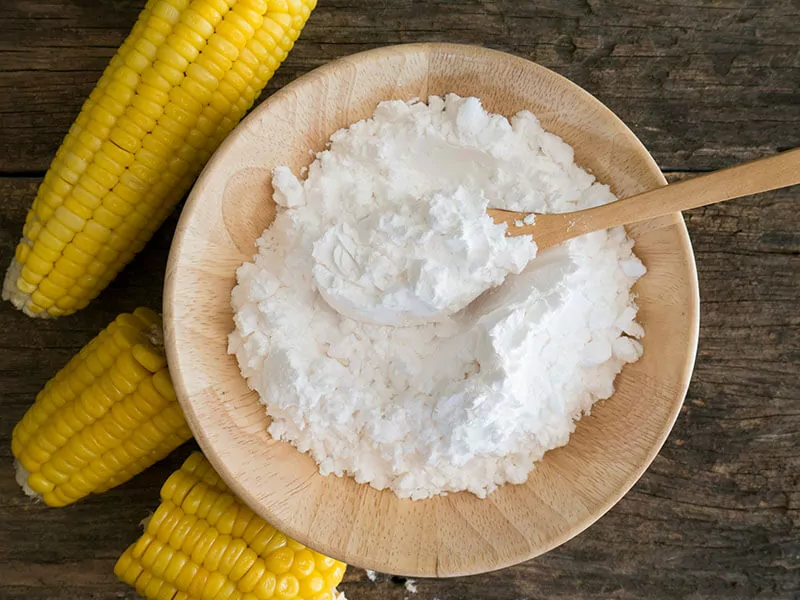
Corn starch is produced from the endosperm of the corn kernel and is totally different from corn flour which is extracted from the entire kernels. Corn grains are processed to get rid of outer layers before being dried and milled into powder.
From the outside, cornstarch is a fine, white, chalky, sometimes a bit yellow powder, which is vaguely sweet and odorless. When being thickened with liquid, it lends an opaque color and gel-like texture to it.
It’s extensively used as a thickening agent worldwide, especially in Asian and North American countries.
For those who wonder if it’s truly possible for cornstarch to spoil, you can buy cornstarch in bulk. It will stay fresh for nearly an indefinite time if you keep it tightly closed at a cool, dry location in your house.
The Main Culinary Uses of Potato Starch And Cornstarch
Potato starch and cornstarch are well-known ingredients in the kitchen which you can incorporate into many dishes. Let’s see!
Potato Starch
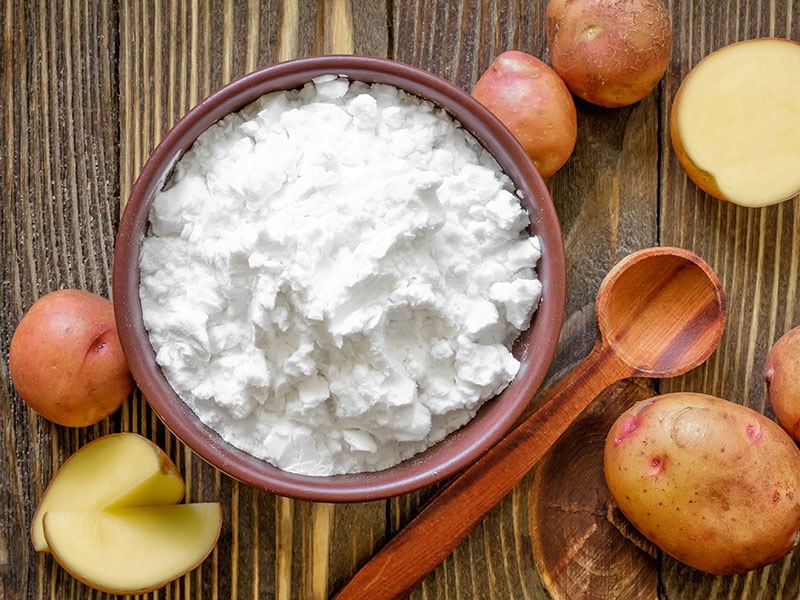
Used to thicken broth, soups, sauces, and gravies: Due to its high boiling point and high binding powder, potato starch is a popular thickening agent. In fact, it’s a common way to thicken chili. Moreover, it keeps sauces, soups, and stews transparent, not cloudy as flour.
Used as a meat tenderizer: If you don’t have a meat tenderizer or don’t even know what meat tenderizers are about, use potato starch instead. When mixed with marinade, it can soften and ready the meat for your recipe. Also, it leaves meat looking shiny after being cooked.
Be a part of gluten-free flour mix: It provides structure and adds moisture to gluten-free baked goods.
Industrial binding agent: As you might not know, potato starch is popularly used in canned products and blends to provide viscosity, such as canned soups. It’s also a familiar additive in confectionery products, pastry, or instant puddings.
Add to the batter to increase the crispiness of frying dishes: Believe it or not, other than the most suitable oil for frying chicken, potato starch is also the secret of crispy fried chicken you crave.
Cornstarch
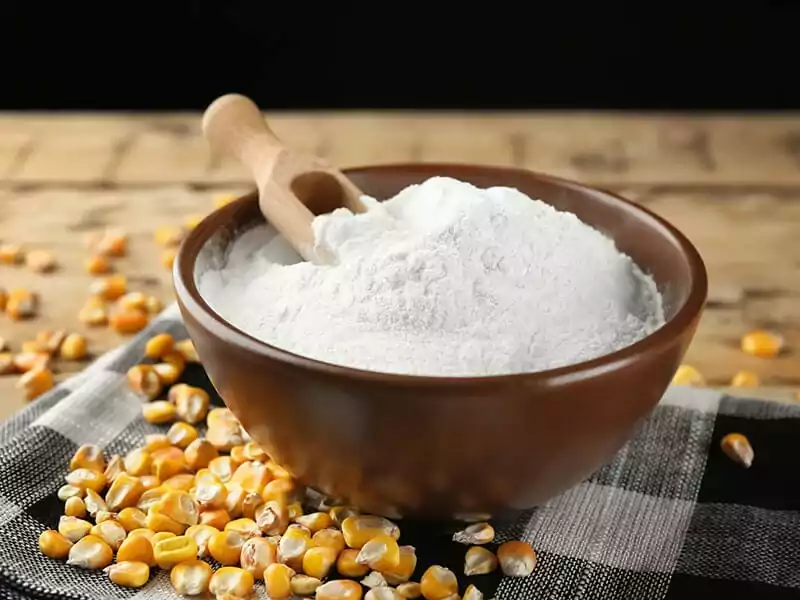
Considered as a thickening agent: It can be perfect for custard, sauces, soups, gravies, and more. Like potato starch, it’s able to produce translucent liquid-based foods. (2)
Used as an anticaking agent: Cornstarch can prevent powdered sugar from clumping.
Used as an egg replacement in baking: Create a mixture of 3 tablespoons of warm water and 1 tablespoon cornstarch to replace eggs in bread, cookie, and cake recipes.
Provide moisture for meat when cooking: Cornstarch coats the meat and prevents it from the pan’s heat, which might cause the meat to be overcooked or become hard.
Enhance crispiness of frying dishes: When being coated with cornstarch, the outer layer of fried chicken can absorb more oil and becomes crispier long after it’s cooked.
Watch this video: Have you known about 12 ways to use cornstarch? Let’s see now!
Are Potato Starch And Cornstarch Nutritious And Healthy?
Can you guess? Let’s look at their nutritional facts and health benefits to answer this question with me.
Potato Starch
Each 100 gram of potato starch provides 357 calories and includes 6.9 grams of protein, 83.1 grams of carbs, 0.3 grams of fat, 5.9 grams of dietary fiber, 55 mg sodium, and other minerals and vitamins.
Potato starch is known as resistant starch, which is proven to have various benefits to your metabolic system. Plus, it’s gluten-free, so it’s great for people with celiac disease.
Potato starch helps stabilize blood sugar, support weight loss, maintain gut health, and prevent colon cancer.
It’s important to note that when you first consume potato starch, it may cause gas and bloat.
Let’s try eating resistant starch in a month. Here’s the result!
Cornstarch
Each 100 gram of cornstarch provides 381 calories and contains 0.3 grams of protein, 0.1 grams of fat, 91.3 grams of carbs, 0.9 grams of dietary fiber, and only 9 mg sodium. As you can see, although cornstarch comes with high calories and carbs, it seems to lack other nutrients like fiber, protein, minerals, and vitamins.
“Does corn contain gluten?” is a widespread concern. Fortunately, this popular food is naturally free of gluten.
Consequently, there’s no need to worry about whether there is gluten in cornstarch. The ingredient is also gluten-free and can be added to numerous recipes for the sake of your health.
It’s recommended to use 1-2 tablespoons of cornstarch at a time to avoid some of its adverse effects, such as spiking your blood sugar and harming your heart health.
Moreover, as I mentioned earlier, consuming a large amount of cornstarch doesn’t bring you many nutrients.
Cooking Temperature, Gelatinization Temperature, And Cooking Time
Each of them features different cooking temperatures, gelatinization temperatures, and cooking time. Let’s elaborate on these criteria.
Potato Starch
Potato starch can withstand ultra-high temperatures, but not for quite a long time. The more you cook, the quicker it loses its thickening power. So, the best way to use potato starch is to add it at the end of the cooking process.
For those who don’t know, potato starch can start forming gel-like liquid at 140–149°F.
Cornstarch
Cornstarch can be suitable for long hours of cooking so that you can add it at the very start of the cooking process. It’s known to thicken quickly at 144–162°F, but it can’t handle ultra-high temperatures as you expect.
Potato Starch Vs. Cornstarch For Frying
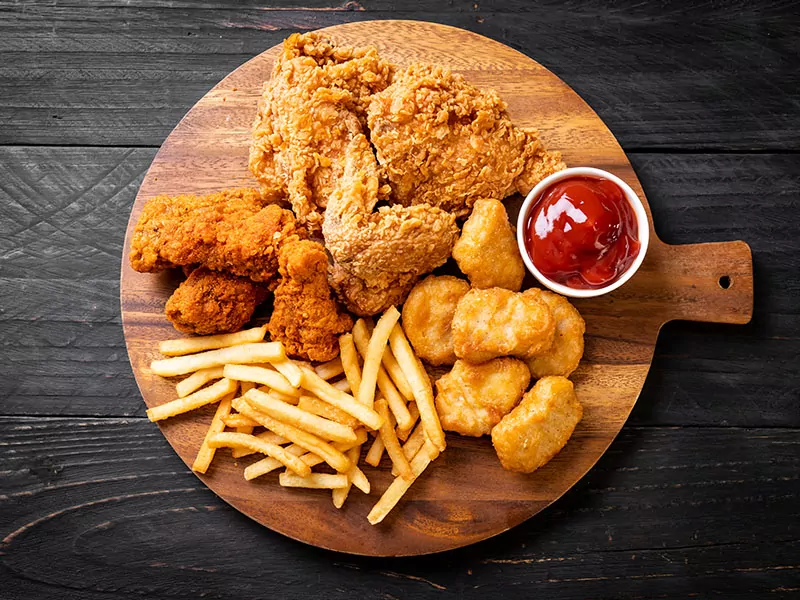
Potato starch is said to be able to tolerate high temperatures when cooking, so it’s perfect for deep frying. It can be added to the batter or act as a coating for deep-fry dishes.
On the other hand, cornstarch doesn’t perform well under extremely high heat; it tends to go tough or becomes too crispy, even gets burnt easily. Therefore, cornstarch is more suitable for being batters and coats for stovetop recipes.
Moreover, cornstarch with 25-28% of amylose, more than that of potato starch, can bring super crispiness to fried food.
Experienced home cooks might get the best of both worlds by mixing them together with their own ratio depending on what they’re going to cook. You can experiment yourself to find the perfect balance between them.
Can You Use Potato Starch And Cornstarch Interchangeably?
They can become a good substitute for each other with the ratio of 1:1 because of several reasons:
Firstly, both potato starch and cornstarch are gluten-free, so they are great for gluten-free baking and cooking recipes.
Secondly, potato starch and cornstarch have no flavor and odor; therefore, you can add them to your favorite dishes without affecting their original taste.
Thirdly, they all can make a slurry with cold water to thicken soups, stews, gravies, and more. But, they cannot be used interchangeably in any food because potato starch is not suitable for cooking for a long time. It should be added to the recipe at the very last minute, not like cornstarch.
How about baking a cornstarch cake today? Here’s the instruction you need.
Fantastic Substitutes Of Potato Starch And Cornstarch
Discover many alternatives for potato starch and cornstarch in the following section and cook with a lot of confidence without worrying about lacking ingredients in your pantry.
Popular Substitutes For Potato Starch
Find out more about 3 amazing potato starch alternatives suitable for many recipes so that you can start cooking right now.
| Potato Starch Substitutes | Conversion Ratio |
| Sweet Rice Flour | 1 tablespoon of potato starch = 1 tablespoon of sweet rice flour |
| Tapioca Starch | For a small amount, use 1 tablespoon of potato starch = 1 tablespoon of tapioca starch For a larger amount, use 1 tablespoon of potato starch = 2 tablespoons of tapioca starch |
| Arrowroot | 3 teaspoons of potato starch = 2 teaspoons of arrowroot |
1. Sweet Rice Flour
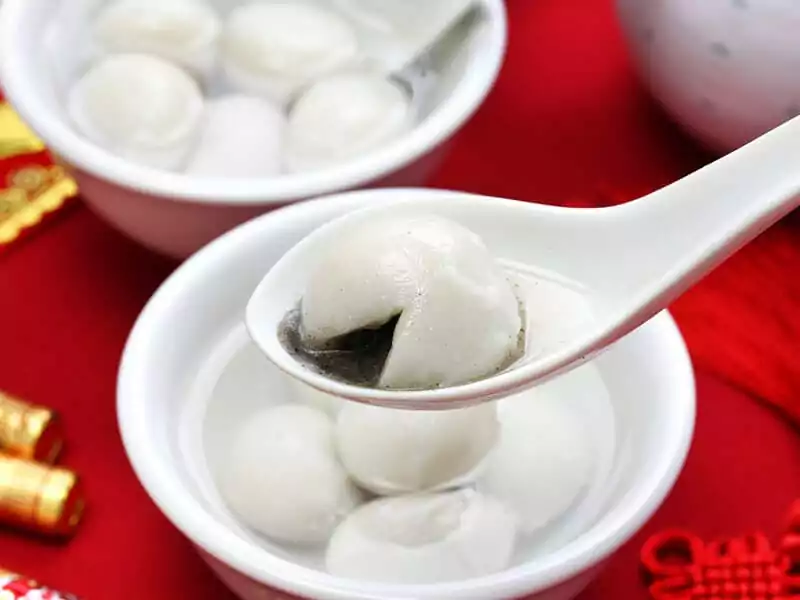
Sweet rice flour, sweet rice powder, or glutinous rice flour is a top alternative for potato starch in gluten-baking recipes with the 1:1 ratio. As the name implies, it’s made from ground sweet rice.
This type of flour, when added to your recipe, could alter the texture of baked goods a little bit and make them slightly chewy. It also enhances moisture and imparts a sweet flavor to the food.
It’s highly recommended that you add it at the beginning of the cooking process to achieve the ultimate result.
2. Tapioca Starch

Tapioca starch comes from cassava root and is considered one of the most gluten-free versatile flour. However, it doesn’t go well with acidic items.
Thanks to its thick and chewy texture, it can be an excellent substitute for potato starch in various recipes, including sauces, gravies, stews, soups, and puddings. Usually, you use twice the amount of which you would go with potato starch because tapioca appears lighter.
But if you tend to use tapioca in a small amount to thicken soups or sauces, opt for a 1:1 ratio.
If you notice, you will find out that it has a slightly sweet flavor. You should use tapioca at the last minute of cooking to get a perfect dish.
3. Arrowroot
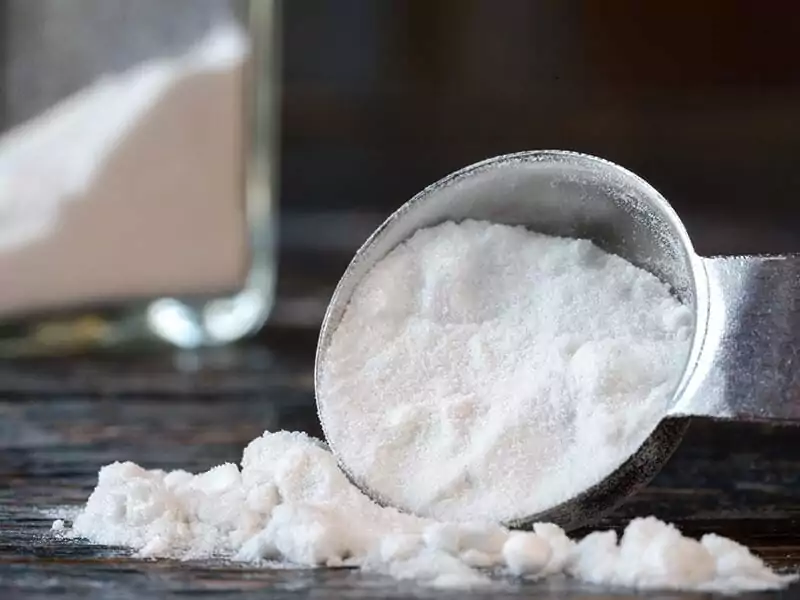
Arrowroot is an essential ingredient in many vegetarian dishes as well as gluten-free diets. It’s similar to potato starch and could be a suitable replacement when you run out of this ingredient.
Arrowroot comes with a neutral taste and is able to thicken dishes without making them cloudy, like other flours. It’s ideal for making bread, gravies, sauces, custards, sweet pie fillings, and puddings. It can also act as an egg replacement in vegetarian recipes.
When substituting, make sure to use 2 teaspoons of arrowroot for 3 teaspoons of potato starch.
Ideal Substitutes For Cornstarch
Let’s have a look at these fantastic cornstarch replacements and learn about their uses carefully before getting to work in the kitchen.
| Cornstarch Substitutes | Conversion Ratio |
| Rice Flour | 1 tablespoon of cornstarch = 2 tablespoons of rice flour |
| All-purpose Flour | 1 tablespoon of cornstarch = 2 tablespoons of all-purpose flour |
| Ground Flaxseed | 2 teaspoons of cornstarch = 1 teaspoon of ground flaxseed + 4 tablespoons of water |
1. Rice Flour
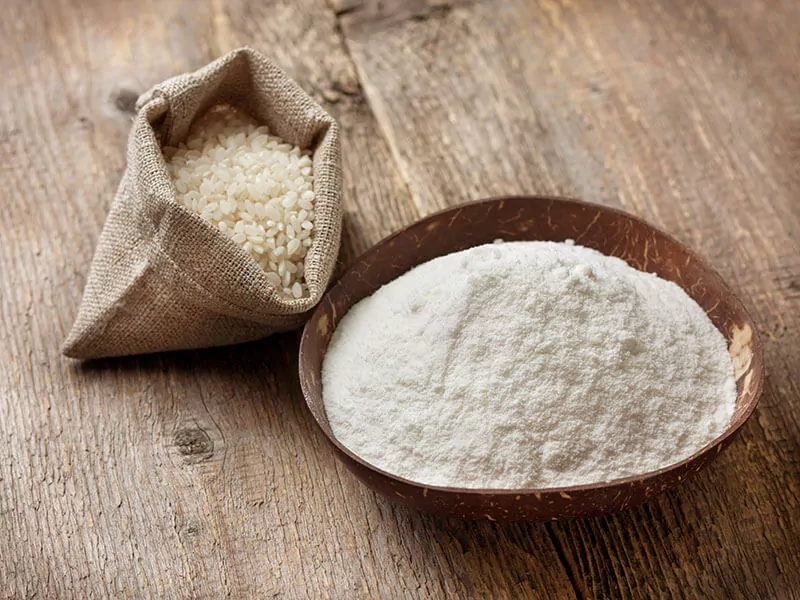
Rice flour is another gluten-free option that can be a stand-in for cornstarch if you can’t find any of it in the kitchen.
You might need to apply the 2:1 ratio when substituting rice flour for cornstarch. That means for 1 tablespoon of cornstarch, add 2 tablespoons of rice flour.
Like most flours, it has no taste and smell, so it doesn’t affect the aroma of the whole dish. It’s great for thickening soups and producing bread and desserts.
2. All-Purpose Flour
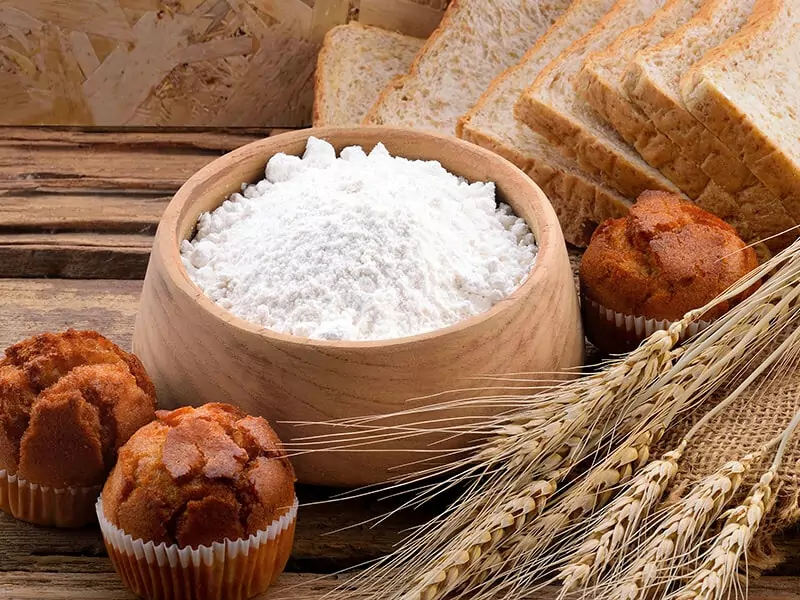
All-purpose flour might be readily available in your pantry, and it’s also a top candidate to use instead of cornstarch. For those who might not know, all-purpose flour is made from milled, refined, and bleached wheat flour.
As you can see, all-purpose flour and cornstarch are used in a lot of common baking and cooking recipes. Remember to follow the 2:1 ratio when replacing all-purpose flour with cornstarch.
This flour features a medium level of protein which makes it a good option for most baked goods like pie crust, cakes, cookies, muffins, and more.
3. Ground Flaxseed
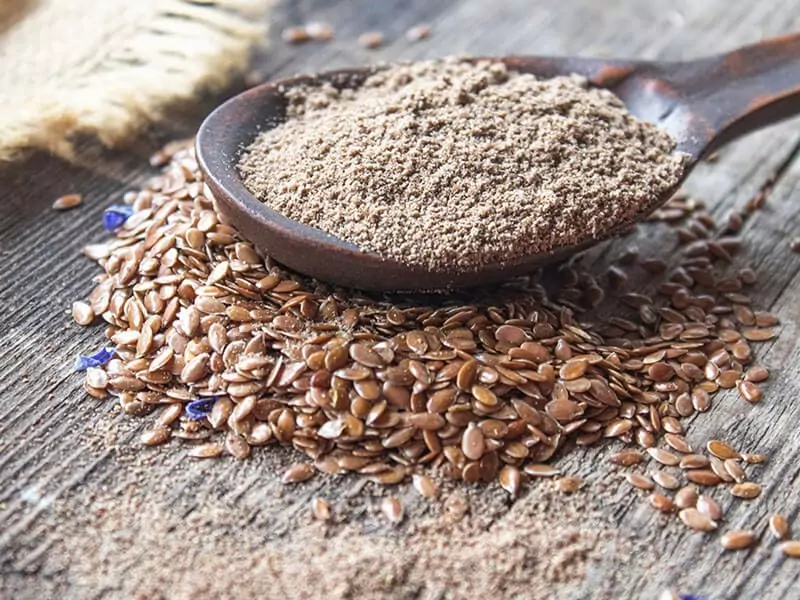
Ground flaxseed is extremely familiar with health-conscious people thanks to its high content of nutrients.
It features a mildly nutty flavor with a hint of sweetness which pairs well with both sweet and savory recipes.
Although it has a distinctive aroma, ground flaxseed can be mixed with other flours to create a mixture for baked goods, such as bread, cookies, muffins, and more.
That is to say; it can be a healthy and delicious choice instead of cornstarch. However, it’s not suitable for thickening liquid-based foods because of its gritty texture.
To substitute, create a paste of 4 tablespoons of water and 1 tablespoon of ground flaxseed for 2 tablespoons of cornstarch.
FAQs
Find out some questions related to these two popular starches and share with me what you think about them.
Potato Starch Vs. Cornstarch – Which One Is Better?
Potato starch might be better for your health because it’s categorized as resistant starch. It also has a higher content of nutrients than cornstarch.
However, cornstarch gives you crispier fried dishes. It can be cooked longer on the heat without losing thickening power.
As you can see, potato starch and cornstarch both have pros and cons, so in my opinion, I think neither is really better than the other because it depends on how you use them.
What’s your thought? Which do you favor more? Let’s comment below so you and I can discuss further.
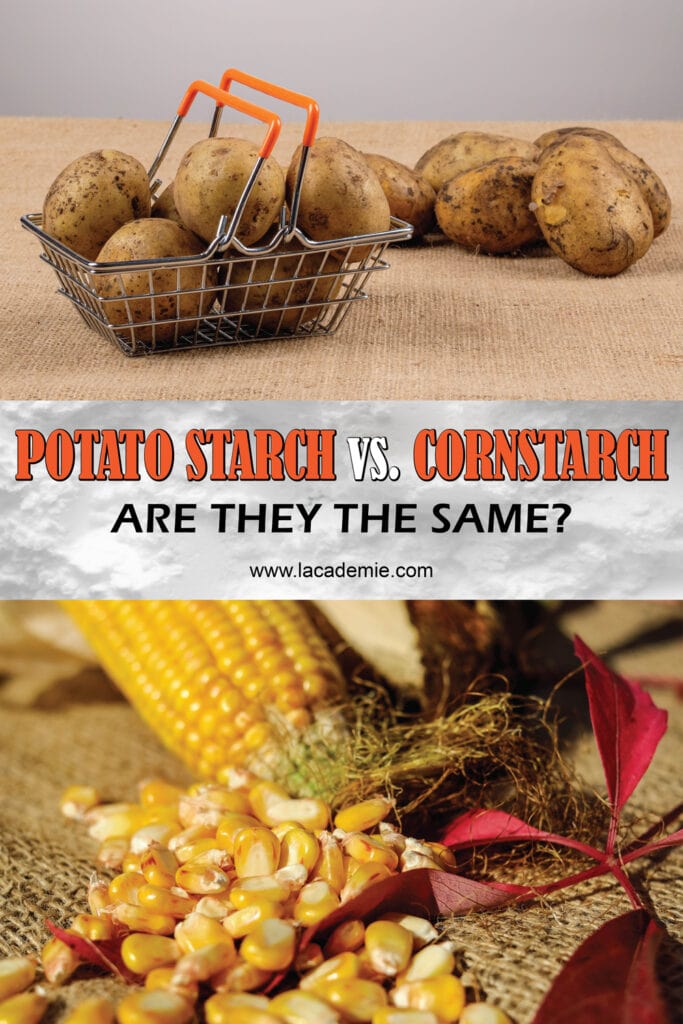
Reference
- En.wikipedia.org. 2021. Potato starch – Wikipedia.
- En.wikipedia.org. 2021. Corn starch – Wikipedia.

